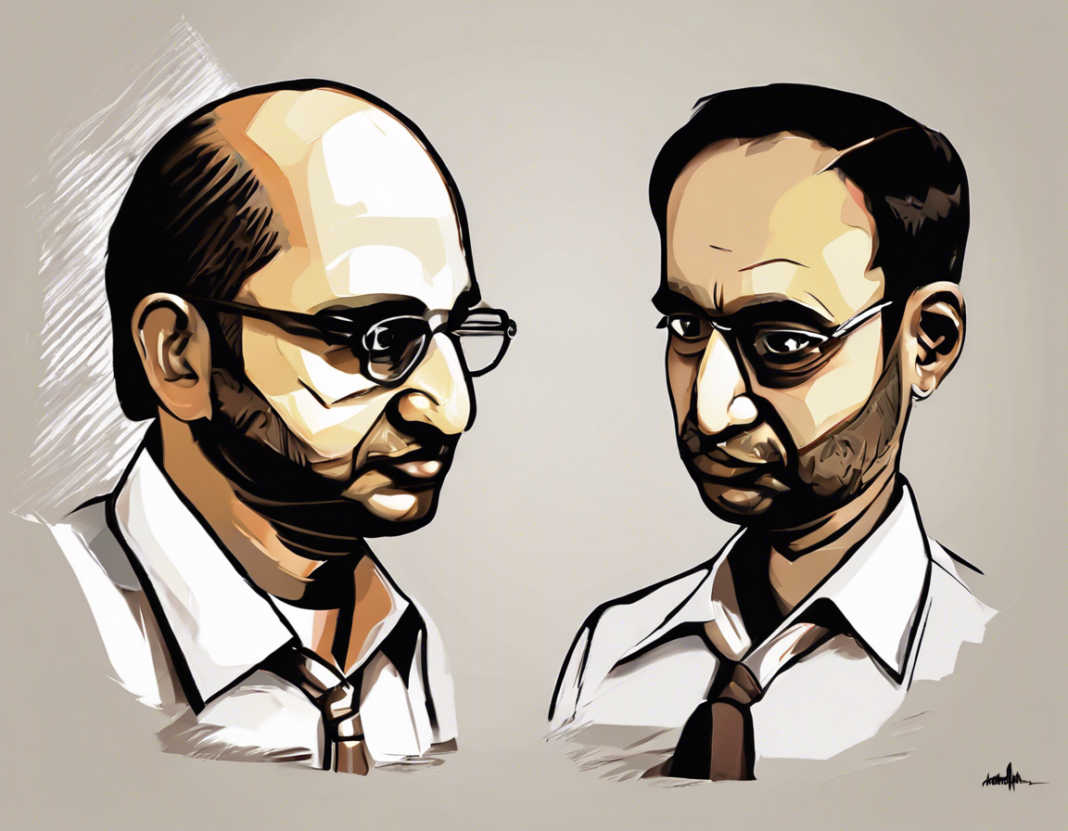Introduction
The Harshad Mehta Scam, also known as the Securities Scam of 1992, was one of the most infamous financial frauds in Indian history. It sent shockwaves through the country’s financial markets, leading to the collapse of the stock market and leaving thousands of investors devastated. The story of Harshad Mehta, a stockbroker who rose to immense wealth and power before his dramatic downfall, continues to be a cautionary tale for investors and regulators alike.
Background
Harshad Mehta was born in 1954 in a middle-class family in Mumbai, India. He started his career as a small-time broker in the Bombay Stock Exchange (BSE) in the late 1970s and quickly rose to prominence due to his aggressive trading strategies and charismatic personality. By the late 1980s, Mehta had become one of the most powerful and influential figures in the Indian stock market.
The Scam Unfolds
Mehta’s rise to fame was fueled by his involvement in a practice known as share price manipulation. He discovered a loophole in the banking system that allowed him to manipulate stock prices by taking advantage of the ready forward (RF) deal mechanism. In simple terms, Mehta used bank funds to boost the prices of selected stocks artificially, creating a bull run in the market.
Impact on the Market
The manipulation orchestrated by Mehta had far-reaching consequences. The artificially inflated stock prices created a bubble that eventually burst, leading to a sharp decline in the stock market. As the truth about the scam unraveled, investors panicked and started selling off their holdings, causing widespread panic and chaos in the financial markets.
Regulatory Failures
One of the most troubling aspects of the Harshad Mehta scam was the regulatory failure that allowed it to happen in the first place. Despite warnings from certain quarters about Mehta’s dubious activities, regulators and authorities turned a blind eye to the irregularities in the market. The Securities and Exchange Board of India (SEBI), the regulatory body responsible for overseeing the securities market, was ill-equipped to deal with the scale and complexity of the fraud.
Fall from Grace
In April 1992, the scam came to light when journalist Sucheta Dalal and her colleague Debashis Basu published a series of articles exposing Mehta’s fraudulent activities. The revelation sent shockwaves through the financial community, leading to a crisis of confidence in the stock market. Mehta’s arrest in December 1992 marked the beginning of his downfall.
Legal Battles and Convictions
The aftermath of the scam was marked by a series of legal battles and investigations. Mehta was charged with multiple offenses, including fraud, cheating, and criminal conspiracy. He spent several years fighting the charges in court before being convicted and sentenced to prison in 1999. Mehta passed away in 2001 while serving his sentence.
Lessons Learned
The Harshad Mehta scam serves as a cautionary tale for investors, regulators, and financial institutions. It highlighted the importance of transparency, accountability, and vigilance in the financial markets. The incident also led to reforms in the Indian financial system, including the establishment of SEBI as a more empowered and proactive regulatory body.
Conclusion
The Harshad Mehta scam remains a dark chapter in the history of Indian finance. It exposed the vulnerabilities and deficiencies in the country’s financial system while underscoring the need for stronger regulations and ethical practices. The legacy of the scam continues to reverberate in the Indian stock market, reminding everyone of the devastating consequences of greed and manipulation in the world of finance.
Frequently Asked Questions (FAQs)
- What were the main tactics used by Harshad Mehta in the scam?
Harshad Mehta’s primary tactic was share price manipulation through the use of bank funds in the ready forward (RF) mechanism. He exploited loopholes in the banking system to artificially inflate stock prices.
- How did the Harshad Mehta scam impact the Indian stock market?
The scam led to a collapse in the stock market, causing widespread panic among investors and a crisis of confidence in the financial system. It exposed regulatory failures and led to a period of turmoil in the markets.
- What role did regulators like SEBI play in the Harshad Mehta scam?
Regulators like the Securities and Exchange Board of India (SEBI) were criticized for their failure to prevent the scam. The incident highlighted the need for stronger regulatory oversight and prompted reforms in the regulatory framework.
- What were the legal consequences for Harshad Mehta following the scam?
Harshad Mehta faced multiple charges of fraud, cheating, and criminal conspiracy. He spent several years battling these charges in court before being convicted and sentenced to prison in 1999.
- How did the Harshad Mehta scam impact investor confidence in the Indian stock market?
The scam significantly eroded investor confidence in the stock market, leading to a period of uncertainty and volatility. Many investors suffered financial losses as a result of the collapse in stock prices.
- What reforms were introduced in the Indian financial system following the Harshad Mehta scam?
The scam prompted reforms aimed at strengthening the regulatory framework and enhancing transparency in the financial markets. SEBI was empowered as a more proactive regulatory body, tasked with overseeing the securities market more effectively.
- Was the Harshad Mehta scam an isolated incident in the Indian financial sector?
While the Harshad Mehta scam was one of the largest financial frauds in India’s history, it was not an isolated incident. The country has witnessed several other cases of financial fraud and irregularities over the years.
- How can investors protect themselves from similar scams in the future?
Investors can protect themselves by conducting thorough due diligence, diversifying their portfolios, and staying informed about market developments. It is also crucial to be wary of offers that seem too good to be true.
- What impact did the Harshad Mehta scam have on the regulatory landscape in India?
The scam prompted a reevaluation of the regulatory landscape in India, leading to reforms aimed at strengthening oversight and enforcement mechanisms. It underscored the need for vigilance and transparency in the financial sector.
-
What is the lasting legacy of the Harshad Mehta scam on the Indian financial system?
The Harshad Mehta scam left a lasting legacy on the Indian financial system, serving as a stark reminder of the risks associated with market manipulation and fraud. It catalyzed reforms and raised awareness about the importance of ethical conduct in finance.




